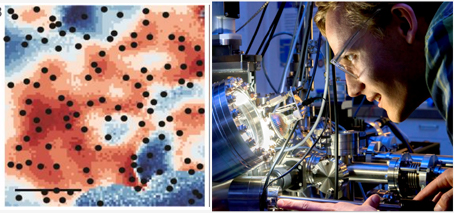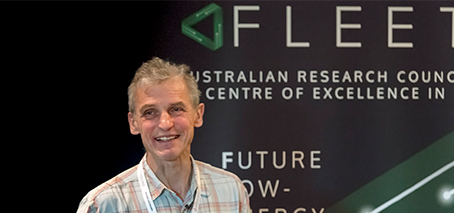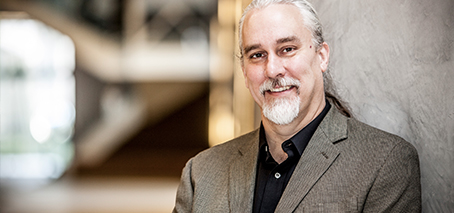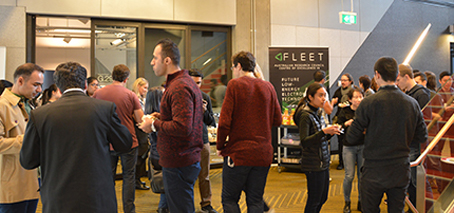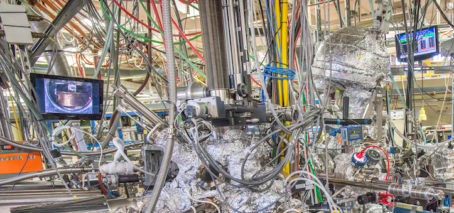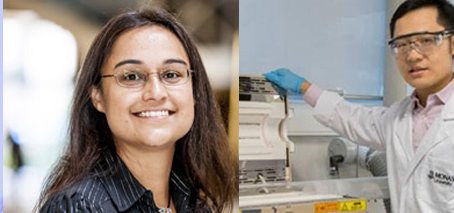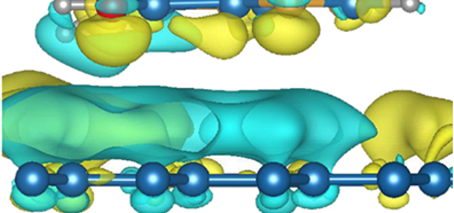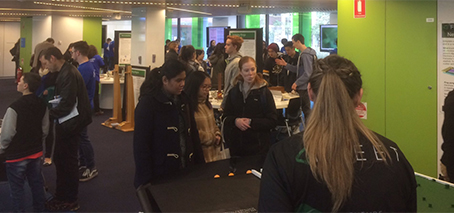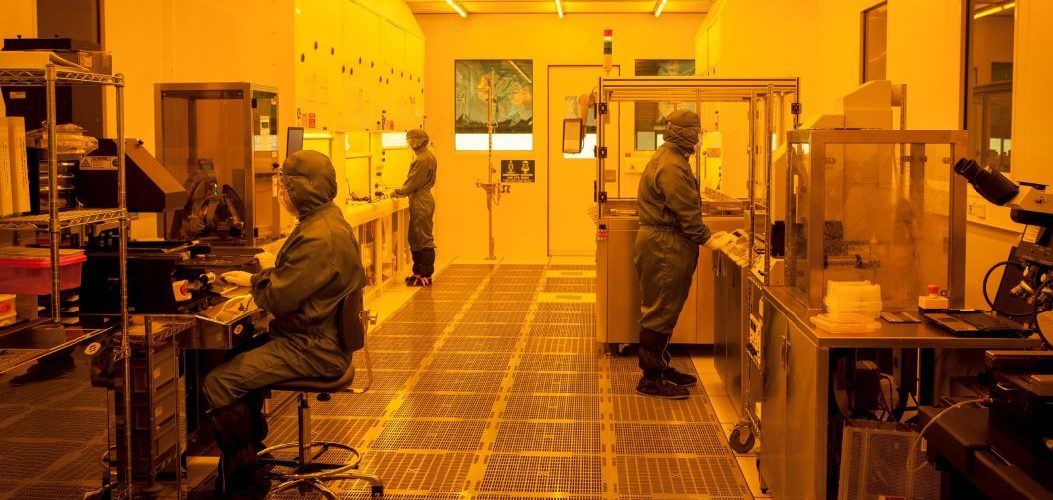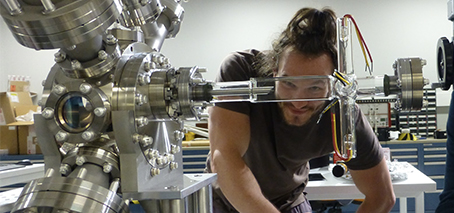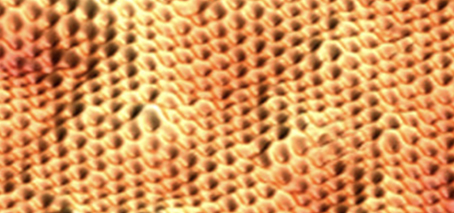Electronically-smooth nature of trisodium bismuthide makes it a viable alternative to graphene/h-BN Researchers have found that the topological material trisodium bismuthide (Na3Bi) can be manufactured to be as ‘electronically smooth’ as the highest-quality graphene-based alternative, while maintaining graphene’s high electron mobility. Na3Bi is a Topological Dirac Semimetal (TDS), considered a 3D equivalent of graphene in that it shows the same …
Ultracold science and benefits of a changeable career in science: Wolfgang Ketterle
Physics experiments at temperatures a billionth of outer space, and the benefits of flexibility in a science career. Nobel physics laureate Prof Wolfgang Ketterle told a crowd of around 200 at Swinburne University of Technology last week about Bose-Einstein condensates (BECs), and other strange states of matter that exist at nano-Kelvin temperatures, which open a new door to the quantum …
Science Says! and other outreach collaborations
FLEET supported the first Melbourne show of Science Says!, a science entertainment event run by The Science Nation, with FLEET’s A/Prof Meera Parish (Monash University) and Prof Chris Vale (Swinburne University of Technology) appearing on the panel at the Royal Society of Victoria. FLEET collaborated with Swinburne University of Technology, Monash University School of Physics and Astronomy, and the Australian …
FLEET researchers get a $4.6m boost in ARC funding round
This month’s ARC funding round saw FLEET research and researchers across five universities awarded additional funding. Across eight separate grants, almost $4.6m new research funding went to projects and facilities led by or involving FLEET researchers or directly contributing to FLEET’s search to develop ultra-low energy electronics and boost related areas of research. Two projects in particular will be key …
Research in Topological Materials
FLEET researchers undertake various research projects in the area of Topological Materials. If you have a project that would fit this theme, find information about a potential supervisor here: PROF. MICHAEL FUHRER Experiments on electronic devices made from novel two-dimensional materials such as graphene, layered transition metal dichalcogenides, topological insulators. Scanning tunnelling microscopy. Surface science A/PROF. NIKHIL MEDHEKAR Computational mechanics …
Michael Fuhrer’s STEM Talk
As part of National Science Week 2017, Prof. Michael Fuhrer participated in STEM Talks, organised by the Faculty of Education at Monash University, where he discussed his research on topological insulators, which won the 2016 Nobel Prize for Physics. The full talk (see the link below) covers the energy used in computation, now around 5% of global electricity, as well …
Got a PhD? What’s next?
Where can your PhD take you? And how can you maximise your potential future? A group of STEM PhDs and higher degree researchers heard about career options post-PhD at a forum last month, run by FLEET at Monash University. The assembled panel of academics, entrepreneurs, business development and research managers shared their own diverse career journeys and top tips on …
Studying electronic structure on Berkeley beamlines
FLEET’s mission to create ultra-low energy electronics depends on an improved fundamental understanding of the electronic structure of atomically-thin, two-dimensional materials. We need to understand how electrons in the material interact with each other and also how they move and scatter through the crystal lattice. FLEET researchers using the vacuum ultraviolet the UV beamline 10.0.1 (HERS) at the Advanced Light …
Two-dimensional materials key to solving ‘invisible’ computing energy challenge
From Monash University Insider (staff only) While a smartphone or home PC itself doesn’t burn too much energy, a tremendous amount of electricity is consumed in the massive data centres (or ‘server farms’) that keep us all connected via the net. A new, ARC-funded research centre aims to address the growing computing energy challenge using materials that are just one …
Study points to better graphene-based biosensors
There is considerable excitement about graphene-based biosensors. In particular, the material’s unique structure and electronic properties offers great potential for rapid, reliable DNA/RNA sensing and sequencing. To date, this potential has been checked by a lack of fundamental understanding of graphene−nucleobase interactions and the origin of measured molecular fingerprints. A recent study has defined key interactions as DNA/RNA nucleobases are …
Monash Open Day introduces FLEET to students and public
Monash University’s recent open day provided a great opportunity to explain FLEET to a large audience. The FLEET zone in the School of Physics and Astronomy area allowed for hands-on demonstrations, while lab tours provided a closer look at the research and FLEET director Michael Fuhrer presented a talk on the big picture challenges of energy use in global computing. …
Materials one atom thick & nanotransistors: FLEET features in nano edition
FLEET features in this month’s annual ‘nano’ edition of the Australian Manufacturing Tech magazine. The article looks at growth of atomically thin and other novel materials and nanofabrication, with a particular focus on partnerships. Atomically thin material projects presented include semiconductor fabrication at RMIT University (Lan Wang) and the University of Wollongong (Xiaoliang Wang) and molecular beam epitaxy (Mark Edmonds …
Universality of the unitary Fermi gas
A recent Monash University study has investigated Fermi gases with only a small number of interacting particles, and has used that simplified case to predict some behaviours within Fermi gases with many more particles. The study was published in Journal of Physics B: Atomic, Molecular and Optical Physics, March 2017 FLEET’s Meera Parish is investigating how robust excitonic superfluidity is …
Peering into the future with bigger Bose-Einstein condensates
A next-generation Bose-Einstein condensate apparatus being built at Monash University will allow bigger Bose-Einstein condensates to be created, and allow even higher resolution imaging of them. Researchers will also have better optical access to be able to manipulate the atoms within the condensate more precisely. The equipment will allow researchers to study non-equilibrium dynamics and quantum turbulence. FLEET Chief Investigator …
Band alignment at semiconductor junction looking good for low-resistance contacts
The future of ultra-low resistance semiconductor junctions in novel low-energy electronics is looking good after a recent study took a very close look at band alignment. FLEET is using two-dimensional materials in the search for new electronics devices that will carry electrical current without losing the significant energy dissipated in current, silicon technology. The new electronic devices developed at FLEET …

